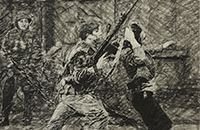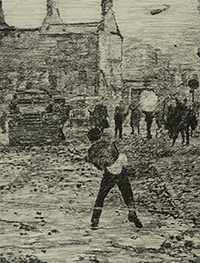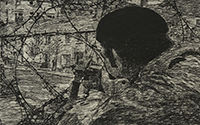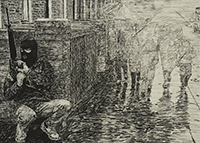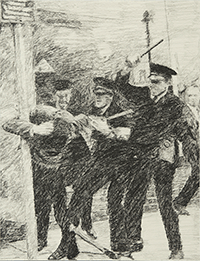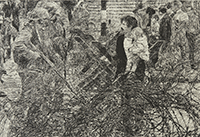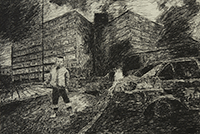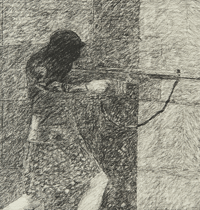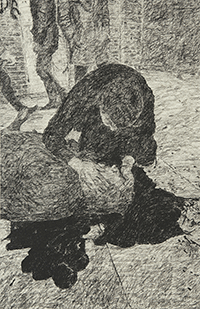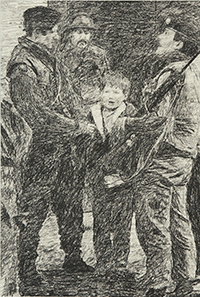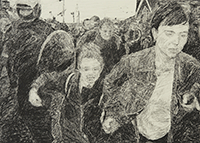Last Rites
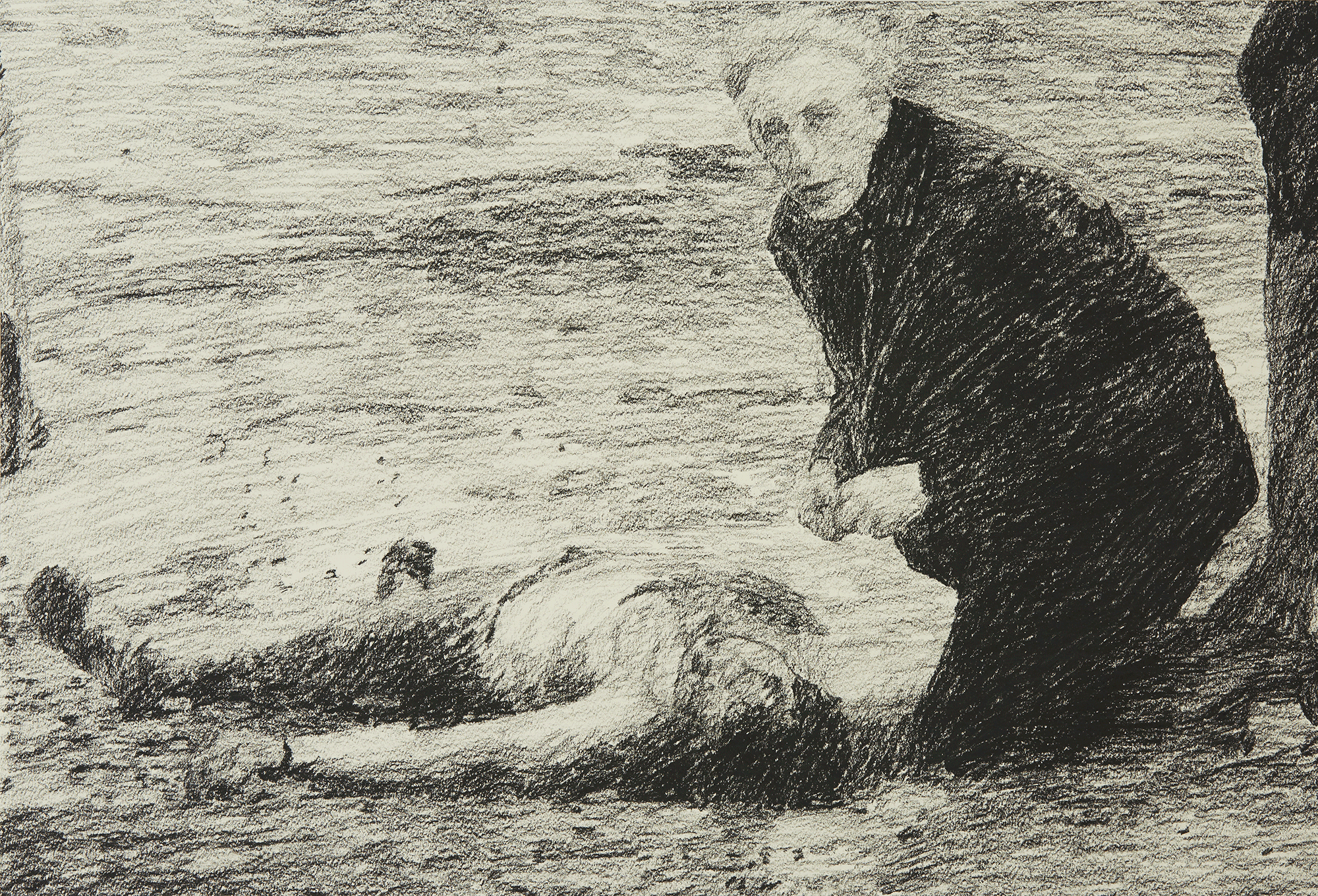
Last Rites
The British Special Air Service launched Operation Flavius, a controversial operation that ended the lives of three members of the Provisional IRA in Gibraltar on the 6th of March 1988. It was believed that the IRA members, Mairéad Farrell, Seán Savage, and Daniel McCann were planning a car bomb attack on the British military in Gibraltar. Members of the SAS in plain clothes advanced on the three suspects at a petrol station, then opened fire, killing all three. None of the three were armed and no bomb was discovered in Savage’s car. The fact that the SAS operation killed the suspects without absolute evidence that they were mounting a bomb attack led to accusations that the government conspired to murder the three. While an inquest in Gibraltar ruled that the SAS acted within the law, the European Court of Human Rights asserted that the planning and execution of the operation was flawed to the point that the use of lethal force was inevitable, but that there was no conspiracy. The Gibraltar killings would serve as the first in a chain of killings in a two-week period.
The suspicion of a conspiracy endured as new evidence was discovered after the inquest that contradicted the version of events presented by the British government. Six weeks later, an operations order for the Gibraltar police was leaked. Inspector Revagliatte, who claimed to be unaware of the operation, was listed as the commander of two armed police teams assigned to Operation Flavius. It also later emerged that Spanish authorities had relevant information leading up to the event. The Spanish authorities knew where Savage and McCann were staying and had the IRA cell under surveillance while they had been in Spain. A senior Spanish police official told journalists on multiple occasions that the Spanish informed the British authorities that they did not believe that the three IRA members had possession of any bomb on the 6th of March. A journalist also discovered that Spanish central intelligence agency conducted the Spanish side of the operation, as opposed to the local police as stated by the British government. Journalists alleged that the Spanish government’s silence regarding the events at the time of the inquest was because Spain was seeking entrance to the Western European Union at the time, and Britain stood opposed. It was alleged that Thatcher’s government put pressure on the Spanish to remain silent in exchange for dropping opposition to Spain’s entry to the Western European Union.
On the 16th of March 1988, a funeral for Farrell, Savage, and McCann was held at Milltown Cemetery, located in the Nationalist area of Ballymurphy. Thousands of people attended the funeral ceremonies, including prominent leaders of the IRA as well as Sinn Féin leaders. A Loyalist UDA member, Michael Stone, threw two grenades into the crowd as the third coffin was about to be lowered into the grave. He then opened fire into the crowd with a handgun. Stone ran towards the M1 motorway, pursued by dozens of mourners. Stone stopped periodically, throwing more grenades and firing at the crowd. Mourners took cover behind gravestones. The crowd chased Stone to the M1 where they caught up with him, beating him until the RUC intervened. The events were captured on camera for television news.
Three were killed chasing Stone. Approximately 60 people who attended the funeral were wounded by bullets, shrapnel and fragments from the gravestones. A few Loyalist paramilitary leaders attempted to distance themselves from Stone after the news broke, but many more viewed him as a legend. Some Loyalists claimed that Stone made the mistake of throwing his grenades to early; had the grenades detonated in air, the shrapnel would have effected a wider area. Stone claimed that he and other members of the UDA originally planned to set bombs in the cemetery before hand, but abandoned the idea because he didn’t want to miss Republican leaders. Due to concerns of heavy handed policing at previous Republican funerals, the RUC and military agreed to keep a distance from the funeral in exchange for a guarantee that there would be no IRA three-volley salute. This agreement was not made public, which fuelled accusations that there was RUC collusion with Stone, alerting him to the lack of security. Stone stated that the previous night when he procured the weapons for the Milltown attack in a location outside Belfast, he was driven back to the city by a member of the RUC. After Stone was convicted of the killings, the UDA magazine Ulster devoted an issue to Stone as a hero who “stood bravely in the middle of rebel scum and let them have it”.
Three days after Michael Stone attacked the funeral of the Gibraltar Three in Milltown, one of his victims, Caoimhín Mac Brádaigh’s funeral procession took place. Those attending were terrified of another Loyalist attack, some in the Nationalist community expressed that families could not even bury their dead in safety. Two British corporals, Derek Wood and David Howes, defied orders to stay clear of the area where the funeral was held. The two were wearing civilian clothes and driving a civilian car. It is alleged that the corporals drove into the funeral procession by mistake. The funeral was heading along the Andersontown Road to Milltown Cemetery, which was still damaged by Stone’s attack, when the corporals’ car appeared from the opposite direction. A Sinn Féin steward signalled the car to turn, but they drove past strait toward the front of the funeral. The crowd of mourners thought they were under another Loyalist attack. The car mounted a sidewalk, sending mourners in multiple directions, and turned down a side road. Wood was driving and when he found the road blocked, he sped in reverse, straight into the funeral procession.
Angry crowds rushed the car, surrounding it. They smashed the windows to get at the soldiers. Wood pulled out a Browning Hi-Power 9mm handgun, with which both soldiers were armed, and fired into the air. After Stone’s attack at Milltown, the crowd was not deterred by a handgun. The soldiers were dragged from their car and beaten. They were then dragged to Casement Park where they were beaten, stripped, and searched for weapons by a small group. A Catholic priest, Father Alec Reid, a key figure in the peace process, intervened in an attempt to save the soldiers. He used his body to shield them and asked for an ambulance to be called. Reid was pulled aside and told not to interfere. The two soldiers were thrown over a wall and put into a taxi that sped away.
Less than 200 yards away, the corporals were taken out of the taxi and executed. They were each shot in both the head and chest and had injuries all over their bodies from being dragged from their car and beaten. The IRA men that killed the two immediately left the scene. Father Reid heard the shots and ran to the site where the soldiers were left. He thought one of the soldiers might have been alive and attempted to revive him. Finding that both men were dead, Reid administered last rights over their bodies. Between the corporals and Stone’s victims, five people were killed and more than 60 were wounded in less than four days, all while trying to lay the dead to rest.


